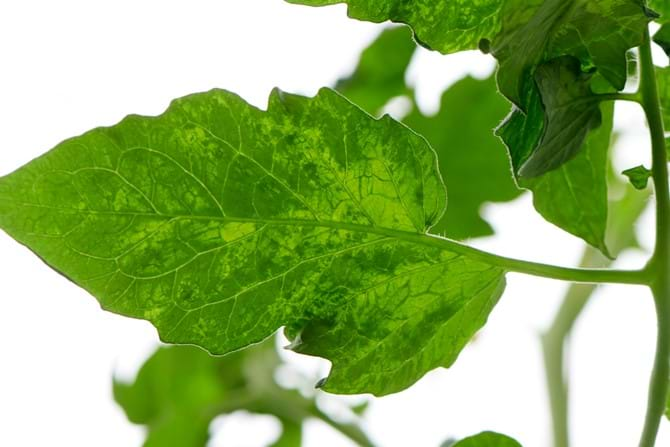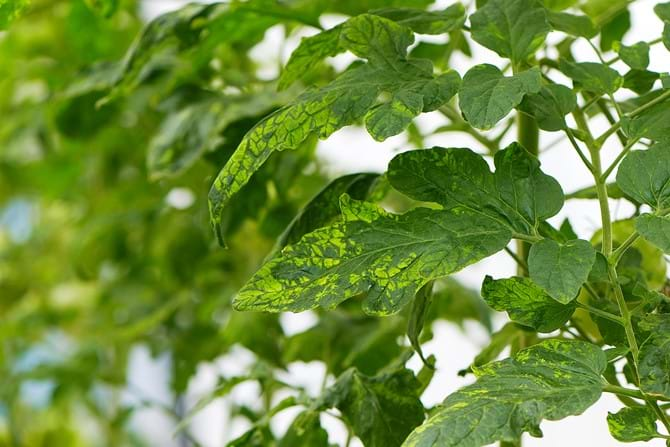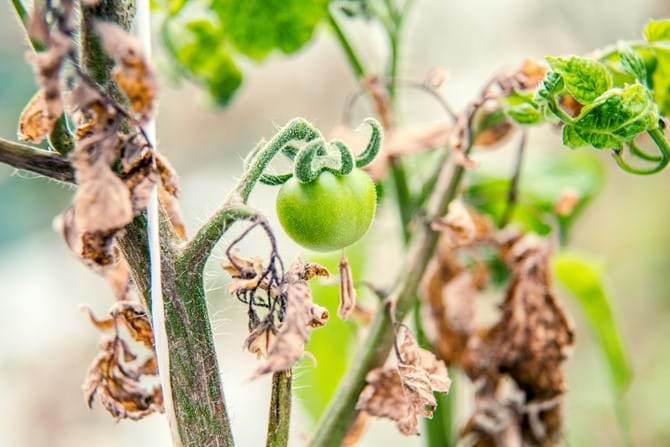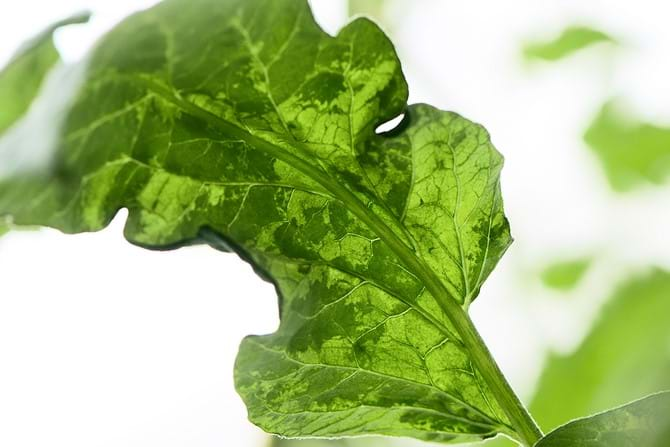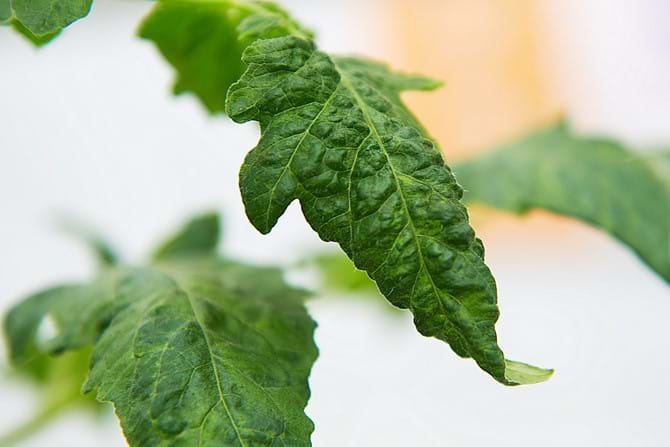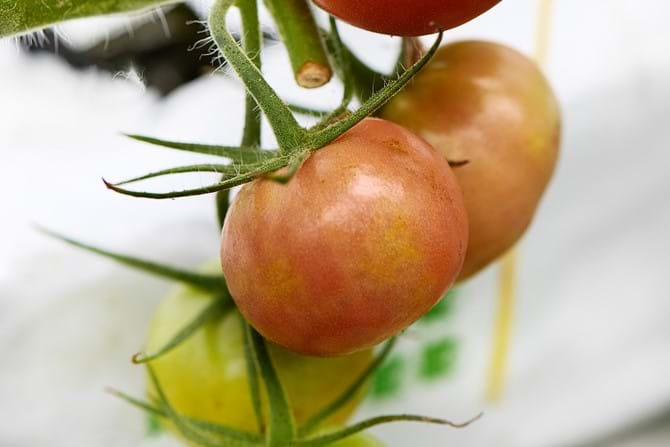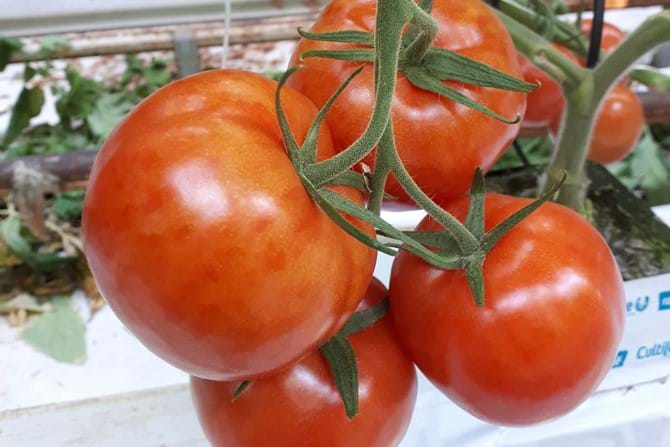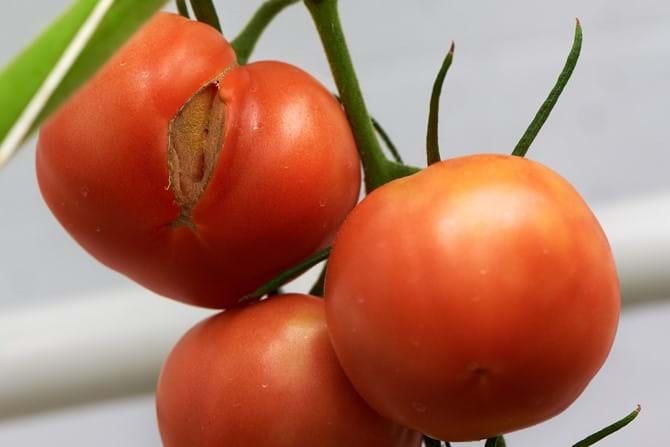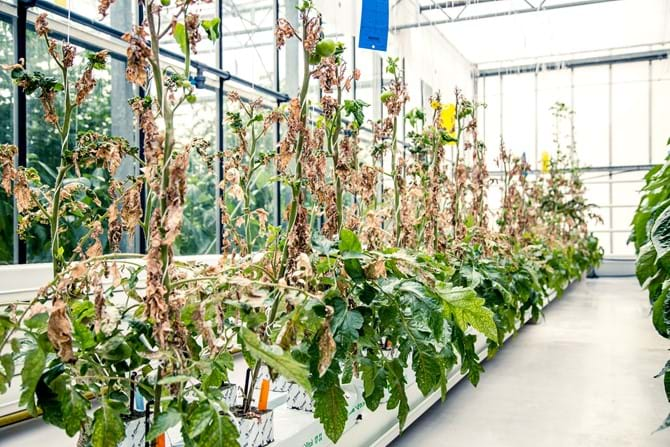
Symptoms
What is pepino mosaic virus?
Pepino mosaic virus (PepMV) is a highly mutable virus that occurs on a large scale in greenhouse-cultivated tomatoes around the globe.
There are several different strains of PepMV, such as LP, EU, CH2 and US1. Certain variants of the virus can cause serious symptoms, such as necrosis of the leaves and stems, and soft, flamed or open fruits. This makes the fruits largely unmarketable. In addition to the genetic make-up of the particular strain of the virus, factors such as climate, nutrition, and plant stress affect the extent to which symptoms occur.
PepMV is not harmful to humans or animals, but does affect tomato plants. Infected fruits are safe to eat.

"If one plant is infected with PepMV, the rest of the crop is sure to follow."
Common PepMV symptoms
Leaves & stems
- Nettle-like heads and/or bubbling of the leaves
- Stunted leaf growth
- Leaves have a pale or grey colour
- Necrotic and dying leaves
- Yellow (chlorotic) and brown (necrotic) mosaic pattern on the leaves
- Yellow spots on older leaves and interveinal chlorosis
- Necrosis of the stems
Common PepMV symptoms
Fruit
- Yellow or orange mottling on the tomatoes
- Flame-like pattern on the tomatoes
- Cracks and damage to the fruit (splitting open)
Highly contagious
Pepino mosaic virus is highly infectious and spreads via infected equipment such as carts, scissors and knives.
When the sap from an infected plant is transferred to a non-infected plant, the non-infected plant is also at risk of becoming diseased. This can also occur when objects such as clothing or telephones have been in contact with infected crops. If one plant in a greenhouse contracts PepMV, the rest of the plants are sure to follow.
